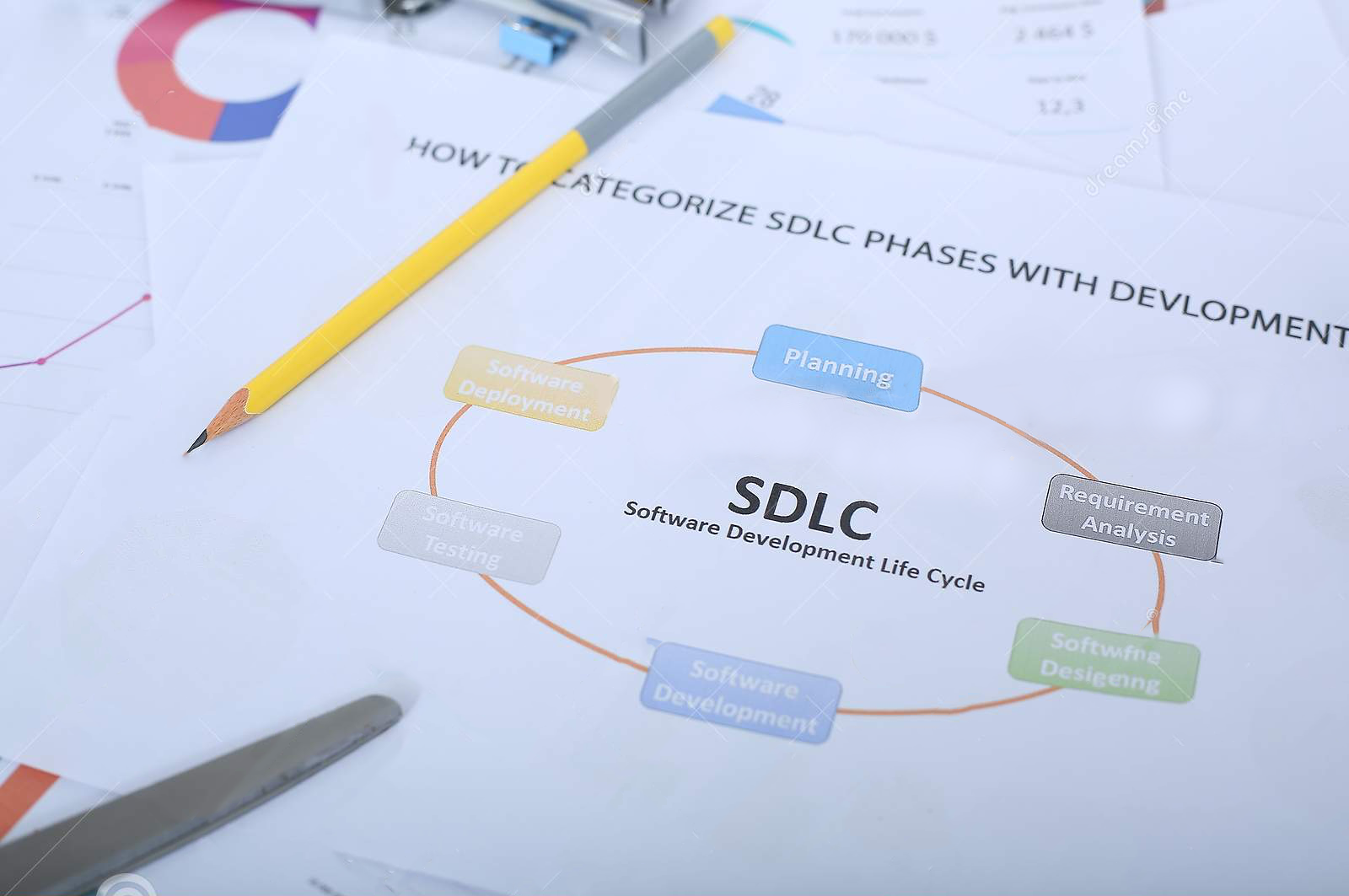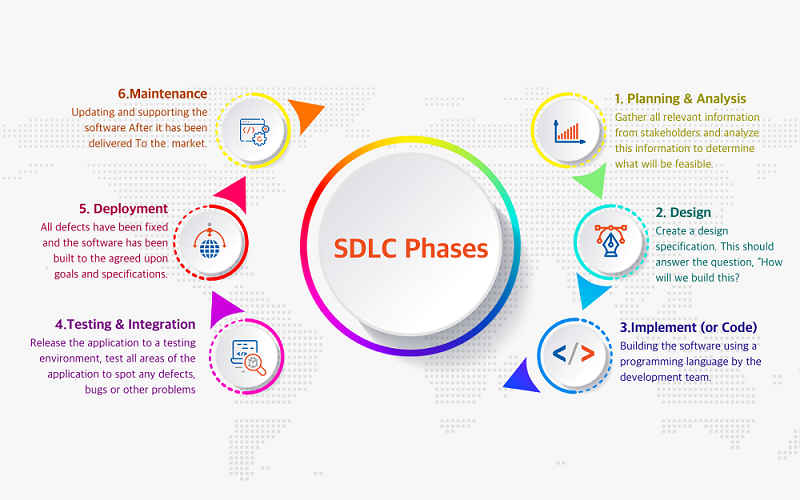
Top 5 Software Development Life Cycle (SDLC) Methodologies
Software Development Life Cycle (SDLC) encompasses a systematic workflow for developing and delivering software applications. It is one of the ultimate tools required by software developers in the software development process.
There are diversified software development life cycle methodologies such as Agile, Lean, Waterfall, Iterative, Spiral, DevOps, etc. Though these methods vary on their path, the purpose remains the same across the process.
In this write-up, let’s know about the necessary steps included in a software development process and various kinds of software development processes and their pros and cons.
Phases included in the Software Development Life Cycle
Generally, the software development life cycle (SDLC) comprises the step by step processes of developing the software.
Planning
In this foremost phase, you need a clear idea about the requirement gathering.
The first phase should be able to outline the following:
- The users of this software
- Details such as cost, functionality, and performance of the software
- Scope of the project
- Consider the project opportunities and risks involved
UI/UX Design
In this phase, the entire architecture of the project is designed. Based on the Software Requirement Specification (SRS), the designers develop the product’s best design architecture in this phase. Basically, the design phase concludes with more than one architecture that the stakeholders will review multiple times.
Besides, testers come up with an adequate testing strategy and suggestions of what and how it needs to be tested in each stage. This is done by assessing the design against the risk assessment, product robustness, design modularity, and so on.
Software Development
This is the longest phase in the software development cycle, and here is where the actual product development begins. Coding of the software is done in this stage based on the design document specification.
Testing
Testing involves in almost every phase in the modern SDCL methodologies. Once the coding is done, it undergoes testing for quality assurance. Testing includes various functional testing like system testing, acceptance testing, unit testing, integration testing, and also non-functional testing.

Implementation
Once the software is successfully tested, implementation takes place. However, the project deployment strategy varies based on the business proposition of companies. Sometimes, the product will be released in a limited environment to collect feedback and use acceptability. In this stage, other bugs (if any) are being reported and fixed.
Maintenance
In this phase, the issues experienced by end-users are resolved systematically. Based on the feedback and user experience report, adequate changes and updates will be pushed at this phase. Subsequently, maintenance is a continuing process across the life of the product in the market.
Popular Software Development Life Cycle Models
There are different variants of SDLC models available, each possessing its pros and cons. Though the approaches may differ from model to model, every SDLC methodology is aimed to deliver assuring and cost-effective software within a limited span of time.
Let’s read about the popular 5 SDLC methodologies:
Agile software development life cycle:
Agile SDLC is one of the most popular software development models used by many.
This is so reliable that, some organizations are even using it for non-software related projects too.
All the tasks are divided into small time frames and delivered in iterations. Small changes are done over the previous release and the final product is delivered with all required features.
Pros
- Able to accommodate new changes or enhancements in between without affecting the budget
- Products penetrate to market faster
- Can identify and resolve minor errors before they evolve into bigger ones
- Saves time and cost due to lesser documentation requirement
- Sound communication between users and product owners
Cons
- Difficult to predict the final product
- Less emphasis on documentation and designing processes
- Challenging as it lacks documentation and designing
- May face high-risk as the clients are unsure about the requirements
Also Read: AI Software Development Life Cycle: A Guide
V Software Development Life Cycle
V-shaped model is inspired by the Waterfall model, wherein V stands for Validation and Verification.
Each development stage has a parallel testing stage. Testing is done at each and every stage of development.
The development team moves to the next stage only after the previous stage is completed.
Pros
- Higher chance of success
- Easy to use and explain
- Can avoid the downward flow of defects
- Time-saving as testing regarding planning and designing is done before the actual coding
- Suitable for smaller projects with a clear idea of requirements
- Tracking of potential defects can be done smoothly
Cons
- Difficult to make adjustments because of no handling to parallel
- Rigid and lacks flexibility as compared to the Waterfall model
- No early prototype developed during the implementation stage
The Iterative approach
The team develops a product without the complete knowledge of the requirements needed.
They start by developing the product in small parts and that too in an evolutionary way.
In this process, testing of the developed part is done, evaluated, and identify the further requirements later.
The Iterative model helps to build a better version of the product by rinsing and repeating the pattern until sound software is developed.
Pros
- More focus on user value
- Minimal delivery cost
- Make the availability of end delivery faster
- Each iteration is easy to examine
- Can plan parallel development
Cons
- Consume more time for task management
- Not suitable for smaller projects
- Each iteration is rigid
Spiral SDLC model
The Spiral model is considered to be the most flexible software development life cycle model mostly adopted for full-blown projects. The development process is divided into small stages for easier follow-up. This methodology passes through four different phases-mainly planning, risk analysis, engineering, and evaluation.
The spiral model helps to develop a highly customized project.
Pros
- Easy to detect risk at each stage
- Can accommodate new changes even at the later stage of development
- Emphasizes client feedback
- Faster development of end-product
Cons
- Not practical for smaller projects
- Consume more time and money for the finished product
- Management risk is high due to the lack of a fixed budget or deadline.
Waterfall SDLC Model
Waterfall model follows a straightforward approach where each task and phase is completed systematically in a strict order.
Every stage is completed before moving to the other, also there is no going back in this model. So each stage should be properly built before moving to the other.
Pros
- Easy team management
- Plan and schedule systematically with clear milestones
- Errors are easy to detect at each stage
- Easy to understand technical documentation
Cons
- Not flexible
- High risk of bugs
- Takes much time for the final delivery, as compared to other methodologies
- Difficult to conceptualize customer needs relating to functional specification during the requirements phase.
To Sum Up
Though there are a handful of software development life cycle (SDLC) methodologies, choosing the right one for developing each software counts. A wrong choice can make the entire workflow upside down. So choose wisely, think twice, and move forward!
Reach ZiniosEdge to know more about your ideal software product development roadmap that accelerate your product’s speed-to-market.
Read Here: How Long Does a Mobile Application Development Project Take?





Comments
No comments yet.